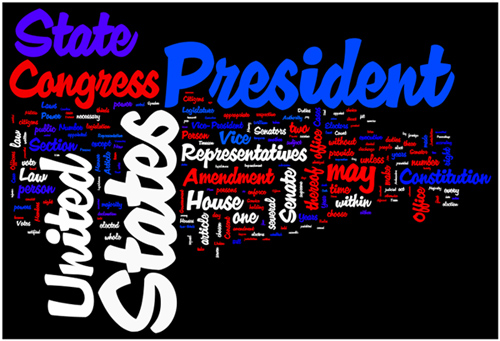Overcoming Hurdles to Social Media in Education
(By Hester Tinti-Kane - Originally posted on April 1, 2013 in EducaUse)
The information below was written by Hester Tinti-Kane and posted in EducaUse on April 1, 2013. The article reviews and analyses the results of a survey conducted by Pearson Learning Solutions in partnership with Babson Survey Research Group.
Below are some strategies for bringing social media into the teaching and learning process while being mindful of integrity and privacy issues. These strategies were shared by faculty experts and by Jeff Borden, vice president of Instruction and Academic Strategy at Pearson's Research and Innovation Center for Online Learning.
Twitter
For instructors who want to integrate Twitter into their teaching without jeopardizing their own or their students' privacy, there are ways to do it. One way is to create a single Twitter account for their class, and have the students manage the Twitter account. Students can tweet from this class account and play an active role in the social learning environment, but they can't tweet from their own, unique user profiles. In this way, students learn what content is appropriate or "tweet-worthy" and, at the semester's end, see what they have done, whom they have interacted with, and whether they have participated in one-way conversations or two-way dialogue. These skill sets can't be underestimated; although the U.S. unemployment rate hovers around 8 percent, job postings requiring social media skills rose 87 percent from 2011 to 2012.Gerald Bergtrom, a biology professor at the University of Wisconsin at Milwaukee, is planning another application that involves Twitter's principles, though not the website itself: he wants to limit students to 140 characters of text when they are formulating hypotheses and conclusions. Why? Because even if some academics would call such a character limit stultifying, there is something to be said for being concise where it counts. "It's not using it as a social medium," Bergtrom says. "It's actually using the 140-character strength to force students to gather their thoughts and state clearly a hypothesis or a conclusion".
has rapidly become one of the most popular sites for social sharing for educators. comScore announced in February that Pinterest accumulated 10 million users since it launched, faster than any independent website it had ever tracked.8 Pinterest is a free, virtual bulletin board that lets users pin videos and images captured from around the web and arrange them into different categories. (See the board by Ariana Amorim for an example.) Pins are also shared and searchable, making it a great content-curation tool for instructors. Faculty can pin together images, links, lesson plans, podcasts, and videos into visually appealing boards. They can create resource boards for themselves, other instructors, or their own students, and use the boards for classroom assignments.
Although Pinterest is a fairly easy social sharing site to learn, it offers no privacy controls! Everything you pin is seen by everybody, not just followers. And, once pictures and comments go online, there's no taking them back. Given this, the best approach is two-fold:
Think before you pin. Don't post any pictures that you wouldn't feel comfortable showing to anyone — including your parents, kids, students, or co-workers.
Don't add any comments that can be taken out of context. If you aren't sure, err on the side of caution.
Although Pinterest is a fairly easy social sharing site to learn, it offers no privacy controls! Everything you pin is seen by everybody, not just followers. And, once pictures and comments go online, there's no taking them back. Given this, the best approach is two-fold:
Think before you pin. Don't post any pictures that you wouldn't feel comfortable showing to anyone — including your parents, kids, students, or co-workers.
Don't add any comments that can be taken out of context. If you aren't sure, err on the side of caution.
Wordle
Another social media site faculty can use as a great instructional tool — and with better privacy protections — is Wordle.net, a tool that generates "word clouds" from text that you provide. Word clouds visually display words, with their size indicating usage frequency. Faculty can use Wordle in a number of creative ways, such as to create a beginning of the year "Get to Know Me" project or a "What I've Learned" year-end course wrap-up. They can also have their students use Wordle to create graphs or to analyze their writing by pasting in their drafts to see if they've used certain words or phrases too often.
No comments:
Post a Comment